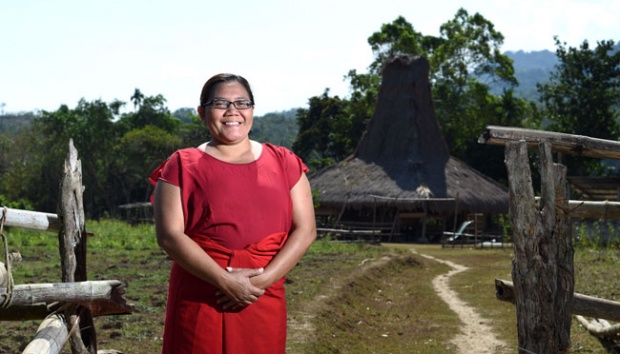
TEMPO.CO, Jakarta – The conversation with Imelda Sulis Setiawati Seda, 46 years old, on Tuesday night, December 20, 2016 illustrates terrible electricity infrastructure in Southwest Sumba Regency, East Nusa Tenggara. That night, a blackout has been going on for three hours. As the lighting is minimum and the air humidity is high, Sulis had to go out of the house to answer the call from Tempo. “I am now standing under the open sky,” she said at the other end of the telephone line.
Throughout the day, the electricity supply from the PT. PLN where Sulis lives, specifically in South Wewewa Subdistrict, power outage had happened twice during the day. The first power outage took place between 12:00 to 16:00. Another power outage took place between 18:00-22:00. Unreliable power supply has forced Sulis to stay awake until the wee hours to finish up her work.
Sulis is a little lucky as she lives in an urban area. People who live in the rural areas throughout Sumba Island are less fortunate. “As there are many places which are off the grid,” she revealed. As of last year, the electrification ratio in Sumba was only 42.67 percent.
Instead of cursing the darkness, it is better to light a candle. Refusing to complain, the Programme Manager of Donders Social Foundation expanded her social activities to electricity sector. In collaboration with Hivos – the Netherland-based INGO – Sulis became a partner in the construction of renewable energy power station in numerous villages.
The initial project of Sulis and Hivos was on the construction of biogas stoves for underprivileged households. The first phase of the project had been carried out between 2012-2013 period in West Sumba and Southwest Sumba Regencies. As the project was deemed successful in supporting family activities, especially the housewives, the programme was subsequently expanded to Central Sumba Regency until 2014.
The outcome was not relatively satisfactory. As of today, 155 units of biogas stoves have been constructed in the residential areas. The installed biogas stove is capable to supply the gas for five hours cooking and to light up two light bulbs. The manures with no longer gas content are then channeled out and further utilised as the materials for compost preparation.
Upon the conclusion of biogas programme, back in 2014 Sulis and Hivos expanded their programme by building solar-powered water pump to irrigate the farm lands. The rationale was, the rains fall only five months in a year in Sumba Island which has led to many abandoned farm lands during the dry seasons.
As a Hivos partner, Sulis recalled, her duty is to enhance the community awareness about the benefit of biogas stove and solar-powered water pump. Sulis encouraged the village inhabitants to form a group along with the caretaker. Functions of the caretaker include among other coordinating the utilisation of biogas and solar-powered water pump as well as collecting maintenance fees.
Rather than dwelling on energy sector, Sulis also provides trainings on weaving skills for 80 women and youth in North Kodi and Kodi Subdistricts. She then added leadership skills for the weavers. Her target was, that the weavers would step forward to publish their work of arts, speak publicly in the village forum, as well as serving as the child tutors in early childhood education.
Sulis’ busy schedule in Southwest Sumba receives a full support from her husband and both of her children who live in East Sumba and her eldest child who studies in the University of Atmajaya in Yogyakarta. Sulis returns to East Sumba every weekend by travelling in a bus for five hours. While performing her study, she lives in Donders Save Our Sumba house, along with 17 marginalised children.
Programme Secretary of Gender Studies in the Graduate School of the University of Indonesia, Shelly Adelina, perceives Sulis’ figure as a woman motivator for renewable energy in the community. Her role is unique as traditionally the work in energy sector is perceived as a masculine job. “But she took the domain and acts as motivator. That is very good,” she uttered.
Sulis, Hivos, the Ministry of Energy and Mineral Resources as well as other non-governmental organisations’ hardwork in bringing electricity to Sumba have started to bring in the results. The electrification ratio in Sumba today has increased from 24.5 percent in 2010 to 42.67 percent in 2015. Whereas 100 percent electrification ratio is expected to come true by 2025. More of Madam Sulis’ work are still anticipated.
(Source: https://cantik.tempo.co/read/news/2016/12/23/335830057/sulis-setiawati-seda-mama-penerang-pulau-sumba)


